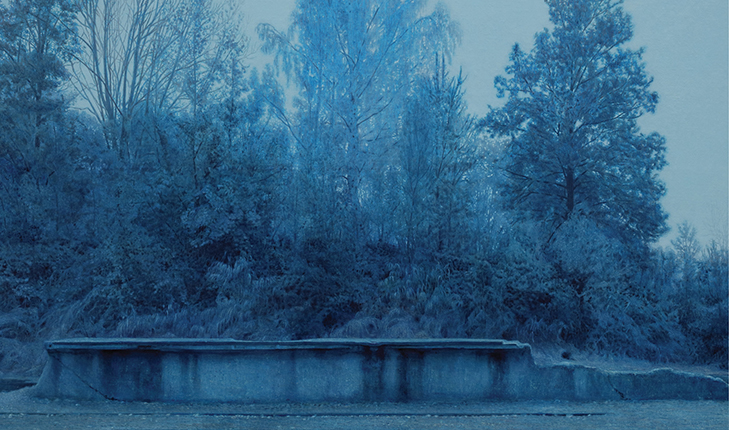Fresno State’s Center for Creativity and the Arts will launch its 2019-20 theme “Art and Identity: Boundaries and Perceptions” with a compelling exhibition that explores the Jewish Holocaust through the artist’s intentional use of colors associated with gas, mineral and flesh in his series of paintings “Prussian Blue.”
The “Yishai Jusidman: Prussian Blue” exhibition will run from Sept. 19 to Oct. 31 in the Phebe Conley Art Gallery at Fresno State during regular gallery hours. Jusidman will deliver an artist talk at 3:30 p.m. Sept. 19 at the Peters Education Center Auditorium inside the Student Recreation Center. An opening night reception will follow at 5 p.m. at the Phebe Conley Art Gallery. All events are free and open to the public.
Organized by the Museo Universitario Arte Contemporáneo in Mexico City, the exhibition has traveled to additional venues in Mexico, the U.S. and China, and is set to show in Buenos Aires in the winter of 2020. Jusidman’s work has also appeared in New York, Belgium, Mexico City, Madrid, Venice, Finland, San Francisco, Paris, Miami and more.
German chemist Heinrich Diesbach discovered the color Prussian blue in the early 1700s. Considered by many to be the first modern synthetic pigment to be artificially developed, it was also one of the first to be widely used by painters in Europe. With a high resistance to fading when exposed to light, the pigment was used to color the fabric of Prussian military uniforms in the 18th and 19th centuries.
“There are colors whose historical implications overpower their symbolic connotations and even the changing perception of their optical energy and formal potential. Among such colors is Prussian blue,” Cuauhtémoc Medina — an art critic, curator and historian — wrote in an essay about Jusidman’s exhibition.
Prussian blue continued to color German history in the early 1940s, once Nazis found a disinfectant and insecticide called Zyklon-B, which was effective at killing large numbers of people quickly. The compound was primarily made up of hydrocyanic acid as the lethal component, infused into mineral pellets that were exposed to air in the sealed chambers.
As the toxic cocktail perpetrated the mechanized genocide, it also combined, through an accidental chemical reaction, with the iron oxide in bricks and mortar — leaving the gas chamber walls in camps such as Majdanek and Stutthof in Poland with eerie deep blue stains that turned out to be chemically identical to the pigment Prussian blue.
Jewish Mexican artist Jusidman resorts to the colors associated with gas, mineral and flesh in his series of paintings Prussian Blue, which depict spaces, memories and stains of the Holocaust, also refered to as the “Shoa” in Hebrew. Using photographs as source material, Jusidman restricted himself to using only three coloring materials — Prussian blue paint, diatomaceous earth as a translucent filler and flesh-colored paints.
“In my Prussian Blue series, I address the Holocaust in painting by seeking to generate the pictorial impression of a silence as solemn and forthright as it is eloquent, thus furnishing an alternative to the fatalistic strictures that have stifled the production of works dealing with this subject,” said Jusidman.
“The emotional rawness of these paintings not only emphasizes an architecture, but also a landscape filtered in equal measure through the emotion of Romanticism and the barbarie of war and genocide,” said Medina. He went on to say that the result is a remarkably balanced body of work, which finds relationships and tensions between color and history, perception and materiality, picture and painting.
He goes on to say, “There isn’t here a judgment on the Shoah, but a meditative approach to the extraordinary burdens of addressing it with the battered resources of painting. While the materiality and historicity of pigments is the cement that holds together this project, those who pause to behold the whole of ‘Prussian Blue’ will be rewarded with the emotional and reflexive experiences that these paintings are able to provoke.”
Parking is $5 in suggested lot P5 for all events. A limited number of free parking codes are available by contacting Dr. Cindy Urrutia, director of the Center for Creativity and the Arts. If you require special accommodations, please call (559) 278-2516. For questions, email meghancartier@gmail.com.





